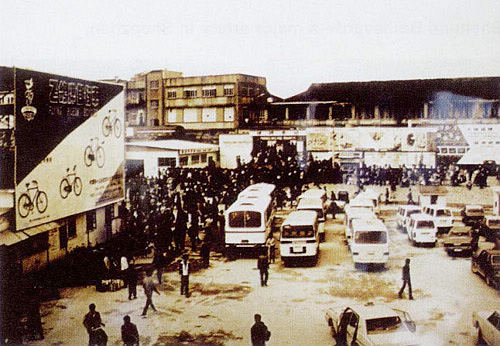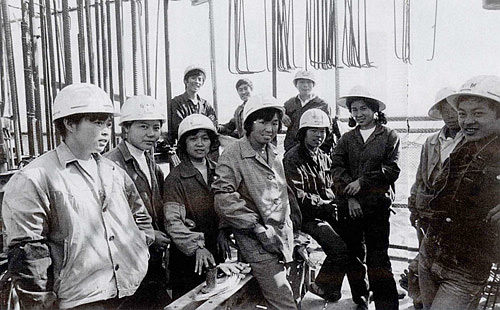|
 |
|
The Shenzhen Bus Station 20 years ago (WU MING) |
China opened its doors to the outside world in the late 1970s. Then, a key problem facing China was how to grasp opportunities to join the world's economic development trend and boost the country's economy.
On August 26, 1980, the Standing Committee of the Fifth National People's Congress ratified the establishment of four special economic zones in Shenzhen, Zhuhai and Shantou (Guangdong Province) and Xiamen (Fujian Province), starting an epoch-making undertaking. This great initiative embodies the realization of a historic leap in China's socialist construction. In the following years, the special economic zones have served as an experimental field of China's reform program, a window on the country's opening to the outside world and an engine to drive and lead the development of inland areas.
This year marks the 20th anniversary of the establishment of the Shenzhen SEZ. Over the past two decades, this former border town with less than 30,000 residents has initially grown into a modern city that covers 2,020 square km and has a population of 4 million.
Superior comprehensive strength
According to Shenzhen Mayor Yu Youjun, the city currently ranks among the leaders of the country's large and medium-sized cities in terms of comprehensive economic strength. From 1980 to 1999, the annual growth rate of Shenzhen's GDP and local budgeted revenue reached 31.2 percent and 41.8 percent respectively. In 1999, the city's annual GDP totaled 143.6 billion yuan, ranking sixth among major cities in the country, and local per capita GDP amounted to 35,908 yuan, coming first in China. The value of local industrial output reached 202.5 billion yuan (calculated at the current price), ranking fourth in the country; and local budgeted revenue was 18.5 billion yuan, placing it third in the country.
In the first half of this year, Shenzhen's economy maintained the momentum of rapid growth. Its GDP in the first six months totaled 69.8 billion yuan, up 14.2 percent over the same period last year; export volume reached $15.513 billion, up 26 percent; and investments in fixed assets totaled 23.69 billion yuan, up 13.8 percent.
Keeping pace with the fast expansion of aggregate economic volume, Shenzhen's economic structure has also been constantly optimized. The proportion of primary, secondary and tertiary industries to the general industrial composition is 1.2 percent, 50.5 percent and 48.3 percent, which approaches that of modern metropolises in developed countries.
Three pillar industries--high-tech, finance and materials distribution - have initially taken shape. At the end of 1999, savings deposits and loans of the city's various financial institutions totaled 255.9 billion yuan and 184.8 billion yuan respectively. The city has entered the front ranks among Chinese cities in terms of financial business volume, quality of financial assets and the economic returns of financial institutions.
In the effort to turn Shenzhen into a materials distribution center, the annual volume of freight and container handling capacity of the local port has respectively reached 46.63 million tons and 2.986 million TEUs, ranking it second in China and 11th in the world. Shenzhen's airport ranks fourth in the country, with an annual passenger transportation volume of 5.25 million people. Shenzhen's economic development has initially achieved a virtuous circle featuring the mutual promotion of the aggregate economic volume, speed, structure and efficiency.
An 'experimental field' and a 'window'
Shenzhen has given full play to the special economic zones' expected role of an "experimental field" of reform and a "window" on opening-up, taking the lead in China in pioneering the initial establishment of a socialist market economic structure.
 |
|
Migrant workers in the early 1980s (CHEN XUESI) |
Focusing on the reform of State-owned enterprises (SOEs), Shenzhen has pushed forward the establishment of a modern enterprise system and created the three-level State-owned assets management and operation system, guaranteeing the security and appreciation of State-owned assets. In the meantime, on the basis of bold exploitation of various forms for materializing public ownership, an economy of diversified forms of ownership is flourishing in Shenzhen.
| 